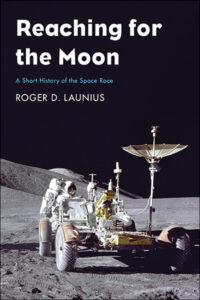 Given all the talk about the Moon recently, you’d think there was a significant anniversary in the history of space exploration approaching.
Given all the talk about the Moon recently, you’d think there was a significant anniversary in the history of space exploration approaching.
You’d be correct, of course. The Apollo 11 mission launched on 16 July 1969 and its Eagle module landed on the Moon a few days later on 20 July, making 2019 the 50th anniversary of a human being setting a first foot on the moon.
While many of us of a particular age will likely well remember this event, most may not fully appreciate what it took to make it happen, or the remarkably complex and inter-twined social, political, and scientific histories that led up to it.
Enter Roger Launius with his newly published book Reaching for the Moon; A Short History of the Space Race. Recently retired from his position as associate director for collections and curatorial affairs at the Smithsonian Institution’s National Air and Space Museum, and formerly also the chief historian for NASA, Dr. Launius is perhaps better placed than quite possibly any other living human being to recount this remarkable history.
And for those who would like to get a taste of what Dr. Launius covers in his book, he recently say down for an interview with The Planetary Society‘s Planetary Radio podcast team for their recent episode “Why Apollo Happened.”
